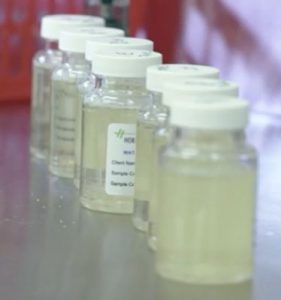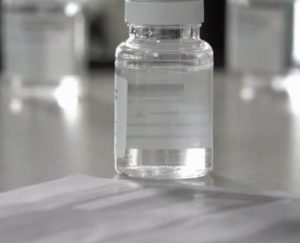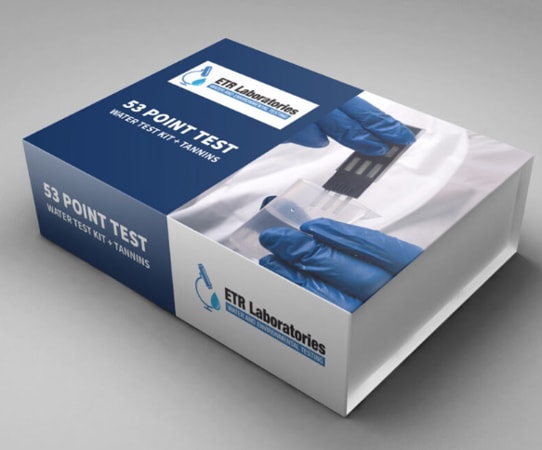EPA states that there 13 million households that rely on well water for their water needs. Private well owners are responsible for maintaining their wells and water quality. You can test your water with a test kit at home or send a water sample to a certified lab.
In this article, we will discuss well water testing with a special focus on how to test well water for bacteria and pesticides.
How to test your well water for Bacteria and Pesticides?
Sample Collection
Sample collection is the most critical part of water testing. The results may not be 100% true if you are not careful while collecting the water for testing. Here’s what you can do to ensure sample collection in the right way.
- Select a faucet before a water filter/softener or any other water treatment unit.
- Use a cold water faucet to collect sample because hot water comes from water heaters that have bacterial growth on anode rod and water tank.
- Make sure there are no filters or aerators on your tap as they usually have bacterial growth and sediment buildup.
- Wipe the faucet with household bleach or a commercial disinfectant to kill any bacteria present on it.
- Let the faucet run for 10 minutes at full speed and then slow down the water.
- Collect the sample. Try wearing medical gloves or wash your hands with an antibacterial hand-wash to avoid contamination.
- Fill the sample bottle around 80%, close the bottle carefully and place it somewhere safe.
What to do after collecting the Sample?
Once you have the sample with you, you can either test at home with a testing kit or send the sample to a laboratory for results. We will discuss both with you.
Home Testing
You can test your well water at home by using a home testing kit. Various test kits are available online; you can select the one that is best suited for you. A test strip contains information about common well water contaminants, the health risks they pose, and what to do to get rid of them.
The benefit for using a home testing kit is that it’s inexpensive and gives instant results. While these kits are budget-friendly and easy to use, the results are not reliable as compared to a State-certified lab.
Recommended Home Testing Kit: SpringWell’s Well Water Test Kit
Lab Testing

Make sure that you are getting your water tested from a State approved lab. Contact your local health department or reach out to EPA Safe Drinking Water Hotline at (800) 426-4791 if you have any doubts.
The lab representative will guide you about everything related to getting a private well tested for drinking purposes. When sending a sample to a lab, inquire about the rates and how much time will they take for testing.
Make sure you are collecting the sample from a faucet that is used regularly and is located close to your well.
The lab will test for following bacteria in your water
- Total coliform (TC) bacteria
- Escherichia coli or E. coli (EC) bacteria
TC bacteria are microbes found in the digestive system of warm-blooded animals, in soils, in plants, and surface water. These bacteria do not make humans sick but indicate presence of harmful bacteria in the water.
E. coli (EC) bacteria are a type of TC bacteria. They are present in millions in the human stool and digestive system. Though they are harmless, a positive test beyond the legal limit indicates that feces and sewage have found a way towards your well water, and it can be potentially harmful to your health.
If this is the case, you are at high risk of suffering from diarrhea, dysentery, and hepatitis.
Interpreting the Test Results
Lab reports mention the Maximum Contaminant Level (MCL) set by EPA and the contaminant concentration in your well. This information makes it easy to select the next course of action.
Treating Bacteria in Well Water
The best way to get rid of bacteria in your well water is to shock chlorinate your well. You can install a RO water filter or a UV purifier to make bacteria harmless.
Some wells have a recurring bacterial contamination problem. While chlorination is an excellent way to deal with bacterial contamination for 2-4 years, periodic bacterial contamination needs special treatment. You can install a chemical injection system to eliminate bacteria and viruses from your well water.
However, a chemical injection system adds a chlorine taste and smell to your water. You will need a carbon filter to remove chlorine from water.
One holistic solution to deal with bacterial contamination and other contaminants is to install a whole house well water filter system with a UV purifier and RO filter. It ensures that your water is 100% pure.
Testing for Pesticides

For private well owners, testing water for pesticides is very important, and you need the services of a full-fledged lab for this purpose. Some home testing kits can be used for testing for pesticides and they may produce reliable tests but will not be able to give you a detailed result and an explanatory breakdown like a testing lab. You must get your well water tested for pesticides if
- Someone in the neighborhood reports pesticides in their well water
- A commercial pesticide distributor is located nearby
- You well is shallow and with a large diameter
- Pesticides are used nearby your well, or you are aware of pesticide mixing, spills within a few hundred feet of your well
Please keep in mind that testing for pesticides is costly as compared to bacteria testing. Pesticides are much more harmful to your health as compared to bacteria. In case you found your well water contaminated with pesticides, you need to retest your well for a double check, contact the local and state health department for advice and install a recommended water filter or go through the required disinfection or cleaning process.
FAQ
Do I need a special flask for collecting water samples, or any other container will do?
It is not necessary but it is better if you use a sanitized flask or bottle to collect water sample. The test results may not come out true if the sample container is already contaminated. Close the container and keep it away from direct sunlight, and don’t refrigerate it. You must deliver it to the testing facility ASAP.
Which is the best home testing kit?
We recommend using SpringWell’s Water Test Kits for home sampling. It is slightly costly but it can test up to 53 contaminants in well water. Moreover, its results are reliable compared to other kits.
How to select the best testing lab for water testing?
Ensure the lab you are picking is certified and has a good reputation. Ask your neighbors for references or contact local health office. You can also contact EPA’s safe drinking water hotline at (800) 426-4791 for further information.
What causes bacterial contamination in water wells?
Your water well may be contaminated due to the following reasons.
Poor well construction: Damaged well casing & cap, buried well head, and bad plumbing pipes can cause bacterial contamination. Shallow wells often have high levels of bacterial contamination.
Well repair or construction: Any repairs to your old well or a newly dug well can lead to bacterial contamination. Hence, it is mandatory to shock chlorinate your well after repairing your old well or constructing a new one.
Geological Problems: The soil around your well typically filters bacteria before the water enters the well. However, some aquifers have high bacterial contamination, or the soil is overly permeable. This can result in high levels of contamination.
Well Water System Problems: Bacterial growth inside water treatment units, pipes, and plumbing fixtures can also cause bacterial contamination.
Final Word: The Next Step
If the reports are fine, everything is good with your well water. You may still consider adding a filtration system for your peace of mind because bacteria seep in your water from soil, after a heavy rainfall, or a natural disaster. You can take the following steps to ensure that your well is protected, and you are drinking safe and healthy water from it.
- Make sure your well is covered with a cap or a sanitary seal to avoid contamination.
- Inspect your well’s exposed parts periodically for any damages or cracks.
- The area around the well should be in slope to drain surface runoff away from the well.
- Make sure that the well casing is not cut off below the land surface.
- Keep the area around neat and clean.
- Always hire a certified contractor for any modification to your current well, drilling a new one or sealing an abandoned well.
- Do not use insecticides, pesticides, and fertilizers near the well.
- Regularly inspect septic tanks for any damages and leaks.

